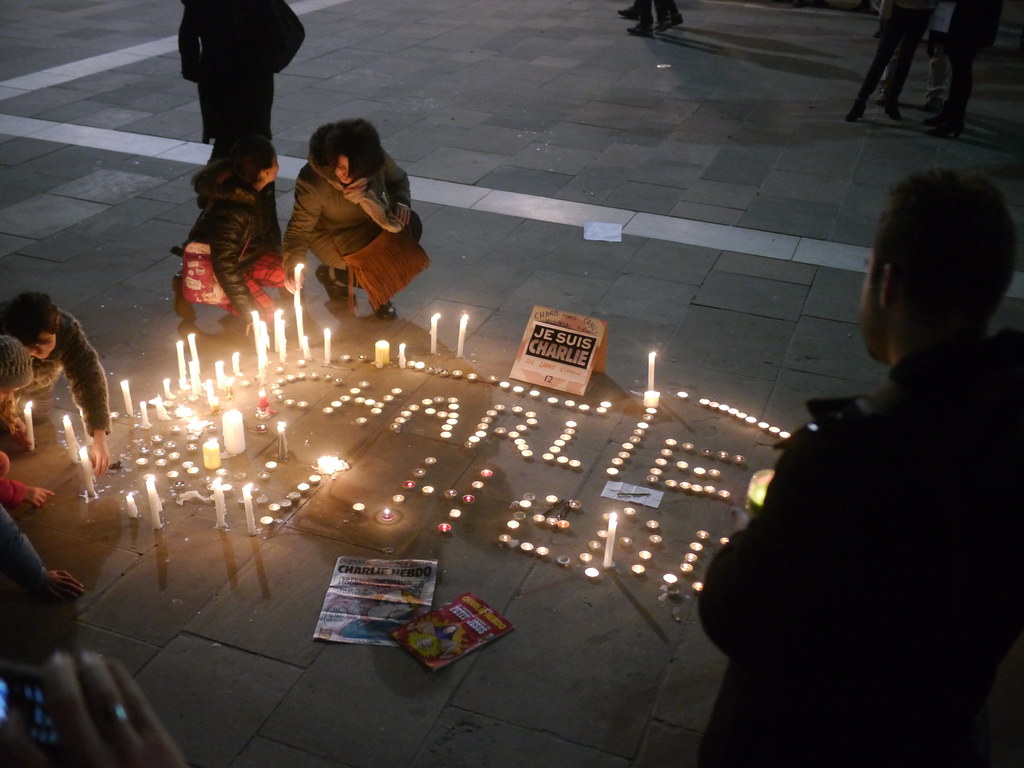Charlie Hebdo’s Tumultuous History as a Cornerstone of French Satire
For decades, Charlie Hebdo has been at the forefront of French satirical journalism, consistently pushing the limits of humor and free speech. Yet this storied magazine also became the target of a violent attack that claimed 12 lives, underscoring its long-standing tradition of provoking controversy and debate.
Early Beginnings and a Taste for Controversy
The publication originated in 1969 under the name Hara-Kiri Hebdo. Embracing the slogan of being “dumb and nasty,” the founders—humorist Georges Bernier and François Cavanna—were no strangers to antagonizing authority. One of their earliest clashes with the establishment took place in November 1970, when they lampooned the death of former French President Charles de Gaulle.
De Gaulle’s passing at his home in Colombey-les-Deux-Églises coincided with national mourning for a fire that had killed 146 people at a nightclub in southeast France. Hara-Kiri Hebdo ran a cover headline proclaiming, “Tragic Ball at Colombey, One Dead,” mocking the proximity of these two events. This provocation led the country’s interior minister to ban the magazine outright, forcing the team to reinvent themselves under a new name.
They drew upon both a monthly comics publication created by some of their members and the iconic Charlie Brown character from Peanuts. Thus, Charlie Hebdo was born, with its first issue appearing just a week after Hara-Kiri Hebdowas banned.
Rising, Falling, and Rising Again
Despite the initial fervor, Charlie Hebdo struggled to maintain readership. By 1981, dwindling sales led to its closure. A decade later, in 1991, the magazine was revived under the leadership of comedian and journalist Philippe Val, who served as editor for 17 years. It was during Val’s tenure that Charlie Hebdo became renowned for its outspoken stance against religious fundamentalism and steadfast defense of freedom of speech.

The 2006 Controversy and Global Attention
In February 2006, the publication found itself at the center of a worldwide uproar over the depiction of the Prophet Mohammed by a Danish cartoonist. Charlie Hebdo printed a cover cartoon showing the Prophet lamenting, “It’s hard being loved by jerks,” while also reproducing 12 of the original Danish sketches and adding new ones of its own.
The issue sold three times its usual number of copies, and many French politicians quickly defended Charlie Hebdo’sright to publish. President Jacques Chirac was an exception, cautioning that content liable to offend religious beliefs “should be avoided.” Several Muslim groups subsequently sued the magazine for “insulting” Islam, though Charlie Hebdo was ultimately cleared of racial insults, with the court affirming Val’s right to satirize Islamic extremism.
Arson Attack and Renewed Threats
Four years later, Charlie Hebdo again drew fury when it named the Prophet Mohammed as its “editor-in-chief” for an issue. The cover featured a cartoon of the Prophet saying, “100 lashes if you don’t die of laughter.” Shortly after publication, the magazine’s offices in the 20th arrondissement of Paris were set ablaze in what appeared to be arson. The attack forced the team to relocate to Rue Serpollet, where, in January 2015, gunmen murdered 10 Charlie Hebdo staff members—including Charb, who had succeeded Val as editor—and two police officers.
A Target for All Faiths—and Universal Support
While Charlie Hebdo may be best known internationally for its depictions of Islamic extremism, it has by no means spared other religions and figures from its caustic humor. Covers have lampooned Pope Benedict XVI in a compromising position with a Swiss Guard, portrayed former French President Nicolas Sarkozy as a sickly vampire, and even showed an Orthodox Jew kissing a Nazi soldier.
In the wake of the January 2015 attack, people worldwide—many of whom had previously been the magazine’s targets—rallied to defend the principle of freedom of expression. The Vatican condemned the assault as an affront not just on the magazine’s staff but on press liberty itself.
French President François Hollande declared the violence “an act of exceptional barbarity,” emphasizing that the victims were journalists who had “always stood for the freedom protected by the French Republic.” British Prime Minister David Cameron affirmed his country’s support for “free speech and democracy.” Meanwhile, European Commission President Jean-Claude Juncker called the attack “an intolerable act of barbarism” and a strike “on freedom of expression and the press,” sentiments echoed by German Chancellor Angela Merkel.





3 Comments